Key takeaways:
- Classical Chinese Dance emphasizes emotional depth and the connection between body and spirit, allowing dancers to tell stories through movement.
- Visualization enhances performance by transforming mere physical execution into emotional experiences, improving focus and connection to the character.
- Techniques such as guided imagery, breaking down dance segments, and incorporating affirmations are effective for developing visualization skills.
- Regular visualization practice can lead to improved muscle memory, confidence, and the ability to convey complex emotions in performances.
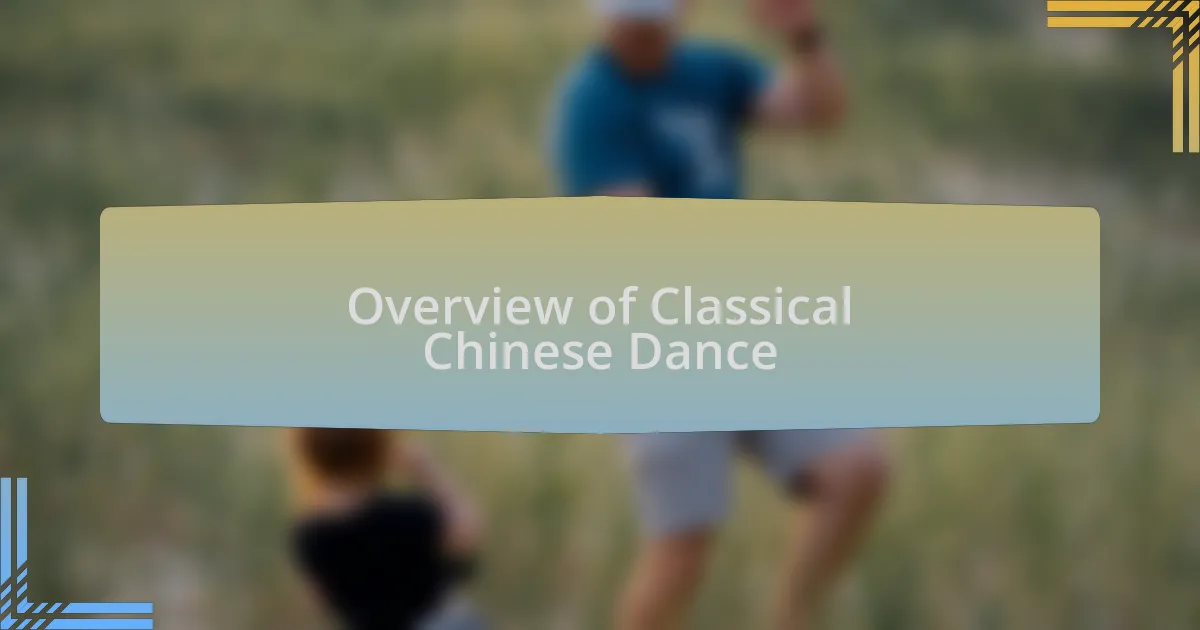
Overview of Classical Chinese Dance
Classical Chinese Dance is a rich tapestry of cultural expression, steeped in history and tradition. Each movement is not merely a series of steps; it tells stories that reflect the philosophical and artistic ideals of Chinese culture. Have you ever felt a profound connection when watching a dancer embody a character from ancient folklore?
The dance form incorporates not only physical technique but also emotional depth, allowing performers to convey a wide range of sentiments—from joy to sorrow. I recall the first time I experienced a live performance; the performance left me in awe, as the dancer’s graceful movements brought the stories of dynasties long gone to life. How powerful is it, I thought, that a simple gesture can evoke such strong emotions?
At its core, Classical Chinese Dance emphasizes the harmony between the body and the spirit, seeking to unite the two through every gesture and expression. This philosophical underpinning invites us to reflect on our own lives; how do we express our inner selves through our actions? For dancers, it is a lifelong journey of mastery and self-discovery.
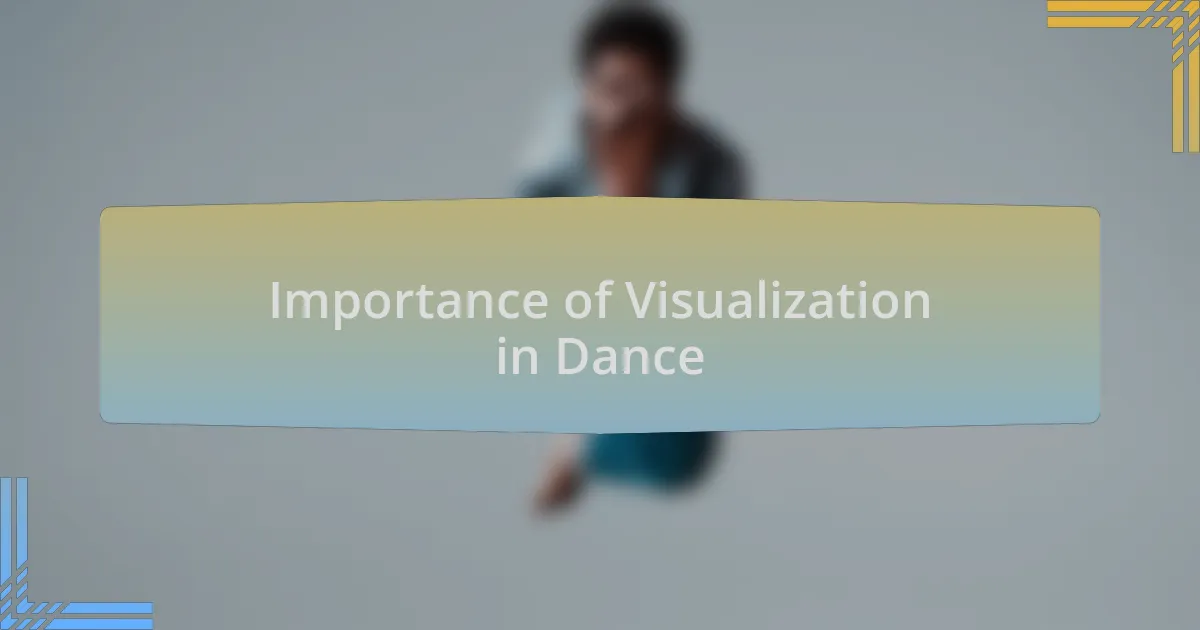
Importance of Visualization in Dance
Visualization plays a crucial role in dance, particularly in Classical Chinese Dance, where the intention behind each movement matters profoundly. When I visualize the story I want to tell, it transforms my performance from mere physicality into an emotional experience. Have you ever noticed how a dancer’s expression can change when they vividly picture their character? It’s like witnessing a metamorphosis.
Engaging in visualization not only enhances my technical execution but also deepens my emotional connection to the piece. I often create a mental storyboard of the performance before stepping onto the stage. This practice allows me to remain present and fully embody the character. How else can we evoke the complexity of emotions that the audience feels? For me, visualization is like painting a canvas with emotions instead of colors.
Moreover, visualization cultivates a sense of focus and clarity during practice. I remember rehearsing a challenging sequence; initially, I struggled with the movements. But when I visualized them in a flowing context, everything clicked into place. Isn’t it amazing how our minds can create pathways that our bodies can then follow? This synergy between thought and movement is what truly elevates a performance to an art form.
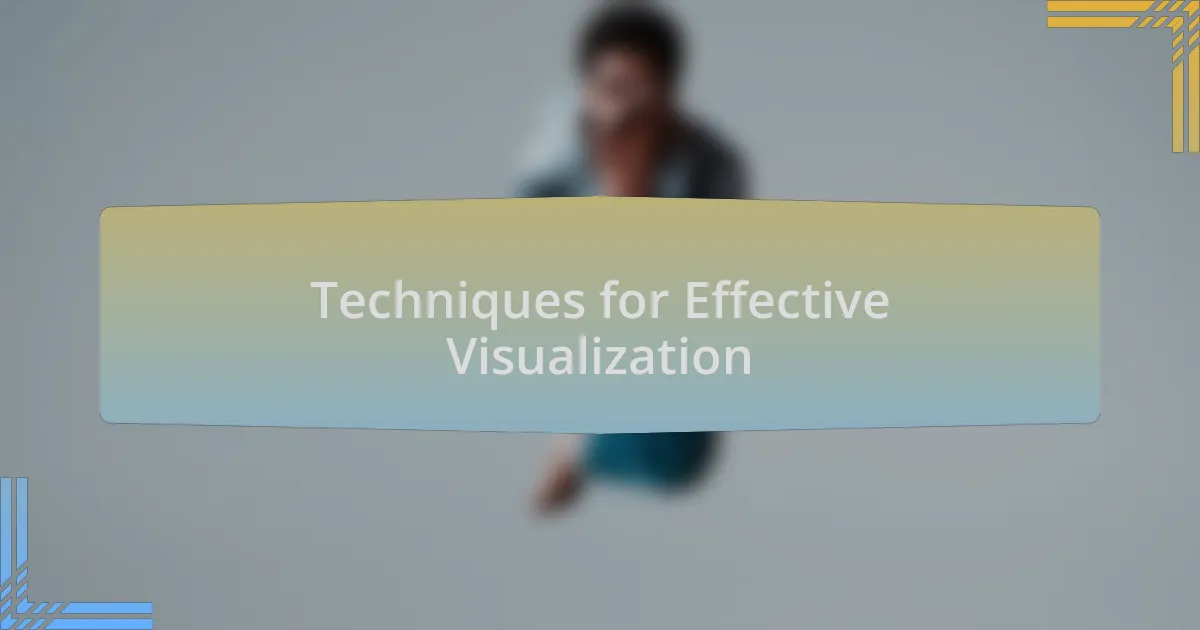
Techniques for Effective Visualization
Techniques for Effective Visualization
One of the most powerful techniques I’ve found is to use guided imagery. I often close my eyes and imagine myself performing in front of an audience, feeling the energy of their anticipation. As I visualize each movement, I pay careful attention to every detail—how my body flows, the music resonates, and even the emotions that wash over me. This method not only sharpens my focus but also helps me embody the essence of the character more authentically. Have you tried immersing yourself so deeply in a performance that the lines between your physical presence and the visualization blur?
Another technique is breaking down each dance segment into smaller, manageable parts. When rehearsing complex choreography, I focus on visualizing just a few movements at a time. This makes it less overwhelming and allows me to concentrate on perfecting each detail. Often, I find that when I visualize these small sections repeatedly, my body remembers them more readily. Have you experienced that delightful moment when a challenging sequence suddenly flows effortlessly? It’s fascinating how our brains engage with movement in such intricate ways.
Additionally, affirmations can significantly enhance visualization practices. As I work through a routine, I repeat positive affirmations that reinforce my capabilities. Phrases like “I am graceful” or “I embody confidence” resonate with me, creating a belief in my skills that transcends the physical performance. I often wonder about the impact of these mental affirmations; they empower me and lift my spirit, connecting mind and body in a beautiful dance of confidence. Isn’t it intriguing how a simple shift in mindset can elevate our entire experience?
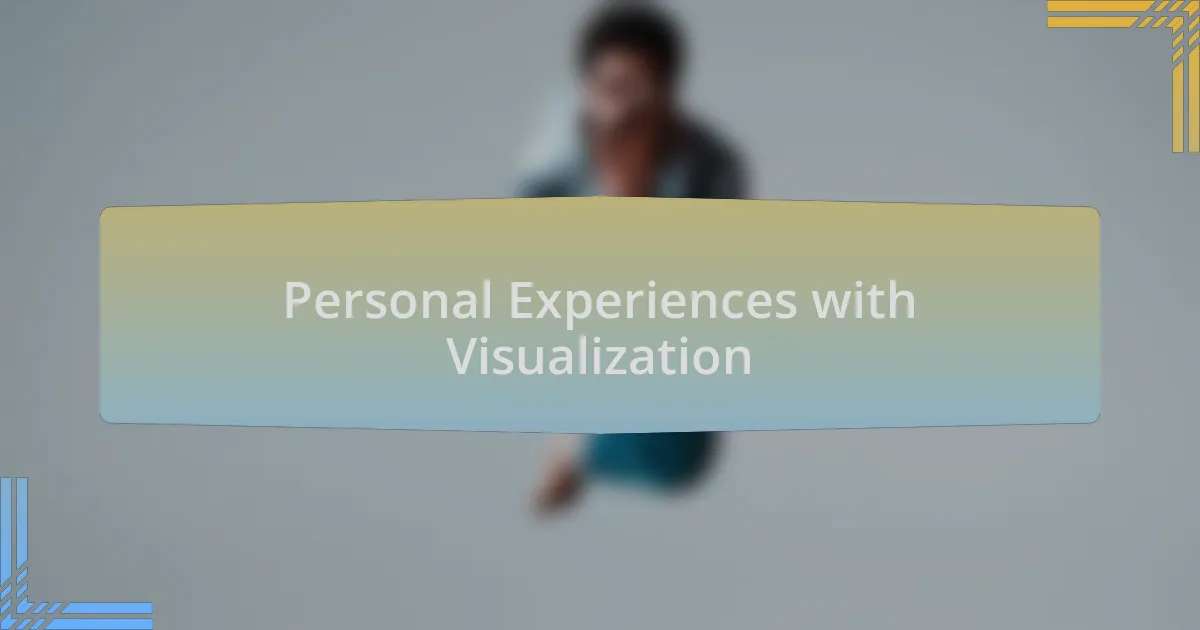
Personal Experiences with Visualization
When I started integrating visualization into my practice, I was surprised by how vividly I could playback my performances in my mind. Once, during a particularly nerve-wracking rehearsal, I visualized standing confidently in front of an audience, feeling the warmth of their smiles. This mental imagery transformed my anxiety into excitement, allowing me to channel that energy into my movements on stage.
There was a moment during a challenging routine when my mind felt cluttered with doubts. I decided to take a step back and visualize myself dancing effortlessly, almost as if floating through the choreography. In that instant, all the frustration melted away, and I found myself immersed in joy and freedom of expression. Have you ever noticed how letting go of self-doubt can unlock a new level of creativity?
Visualizing the emotional arc of a dance piece has also become essential in my practice. One time, I imagined each movement as a wave, rising and falling with a story to tell. This approach not only deepened my connection to the music but also allowed me to convey the emotions intended by the choreography. Isn’t it fascinating how visualization can enhance our ability to connect with both the art and the audience?

Impact of Visualization on Performance
The effects of visualization extend far beyond mere mental rehearsal; they seep into the very fabric of a performance. I recall one instance during an important showcase where, moments before stepping on stage, I closed my eyes and envisioned every single step in vivid detail. This technique not only calmed my racing thoughts but also primed my body to execute those movements with precision and ease. Can you imagine how much more confident I felt, knowing I had mentally mapped out my dance?
Another remarkable impact of visualization comes in the form of muscle memory. I once spent an entire week picturing myself nailing a particularly intricate sequence. When the performance day arrived, my body felt automatic, as though it had already danced that routine countless times. It was as if my mind had laid down a path for my muscles to confidently follow. Have you ever experienced such a seamless connection between thought and action?
Furthermore, visualization enriches emotional depth, transforming a performance into a compelling narrative. In the middle of a rehearsal, I would often picture the character I was portraying, imagining their struggles and triumphs. This practice sparked a fire within me, igniting authentic expressions that resonated with my audience. Isn’t it incredible how tapping into our imagination can elevate a performance from simply executing movements to telling a powerful story?
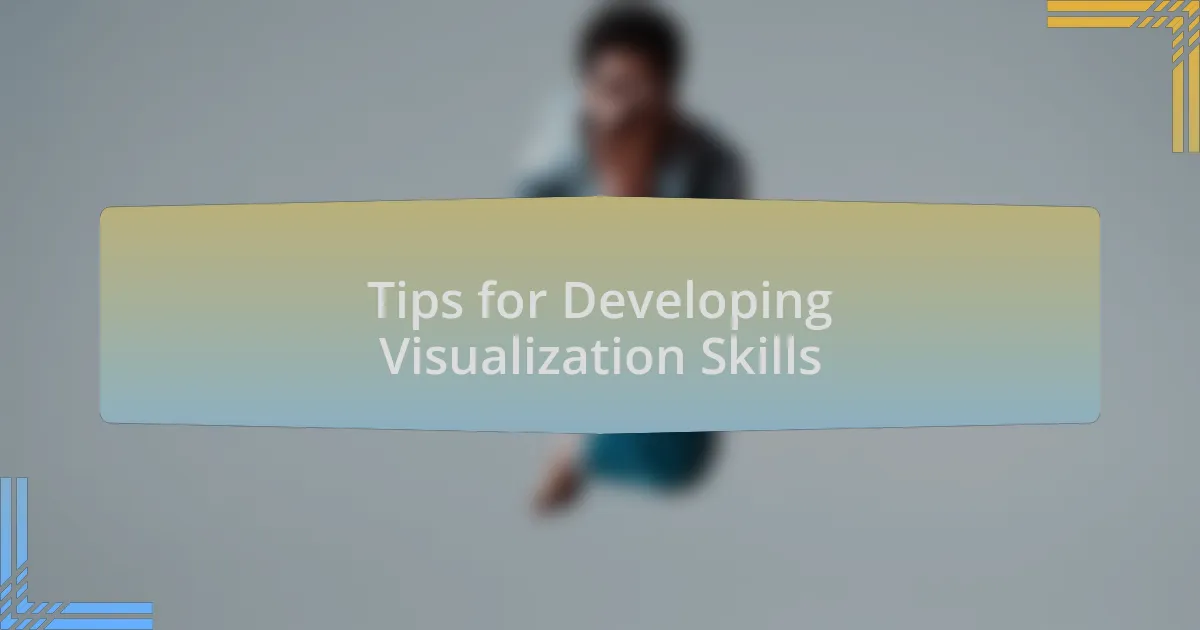
Tips for Developing Visualization Skills
To develop visualization skills effectively, I recommend setting aside time during your practice sessions specifically for this mental rehearsal. I’ve found that quieting the mind and focusing solely on visualizing movements can enhance clarity. Have you ever noticed how your body feels more aligned when you mentally engage with each step before performing it?
Engaging all five senses during visualization can deepen your skills. For instance, while envisioning a dance, I immerse myself in the sensations of the floor beneath my feet, the sound of the music, and even the emotional currents of the story I’m telling. This multi-sensory approach not only makes the experience more vivid but also helps ground my performance in reality. How does it feel to you when you can almost hear the rhythm while picturing your movements?
Finally, I suggest incorporating visualization techniques into your daily routine. Whether it’s imagining a flawless performance while commuting or mentally running through a routine before bed, these moments can reinforce your skills in an organic way. Personally, I’ve found that the more regularly I indulge in these mental exercises, the more instinctive and fluid my dancing becomes. Isn’t it fascinating how such a simple practice can ripple throughout your entire dance experience?